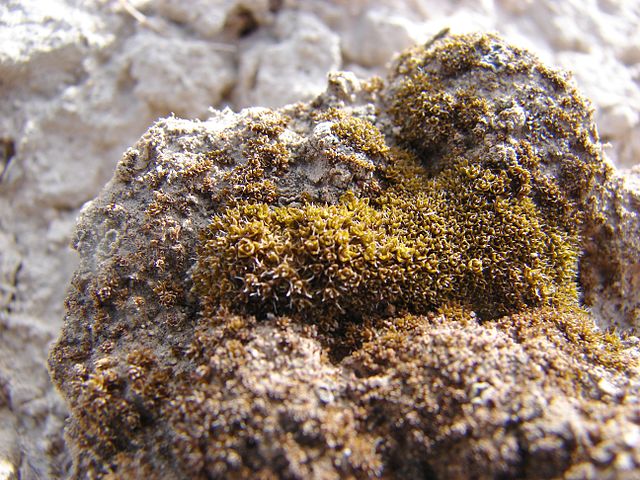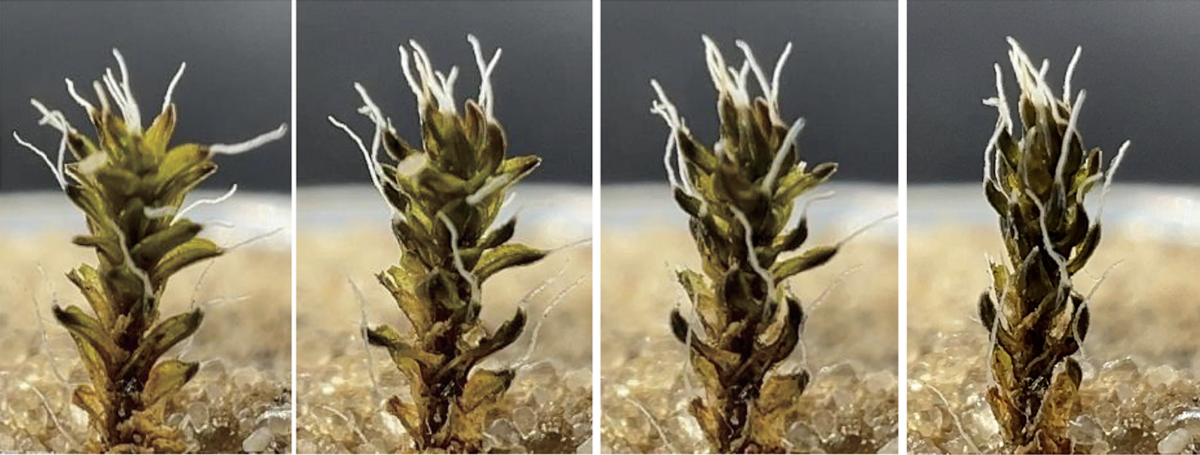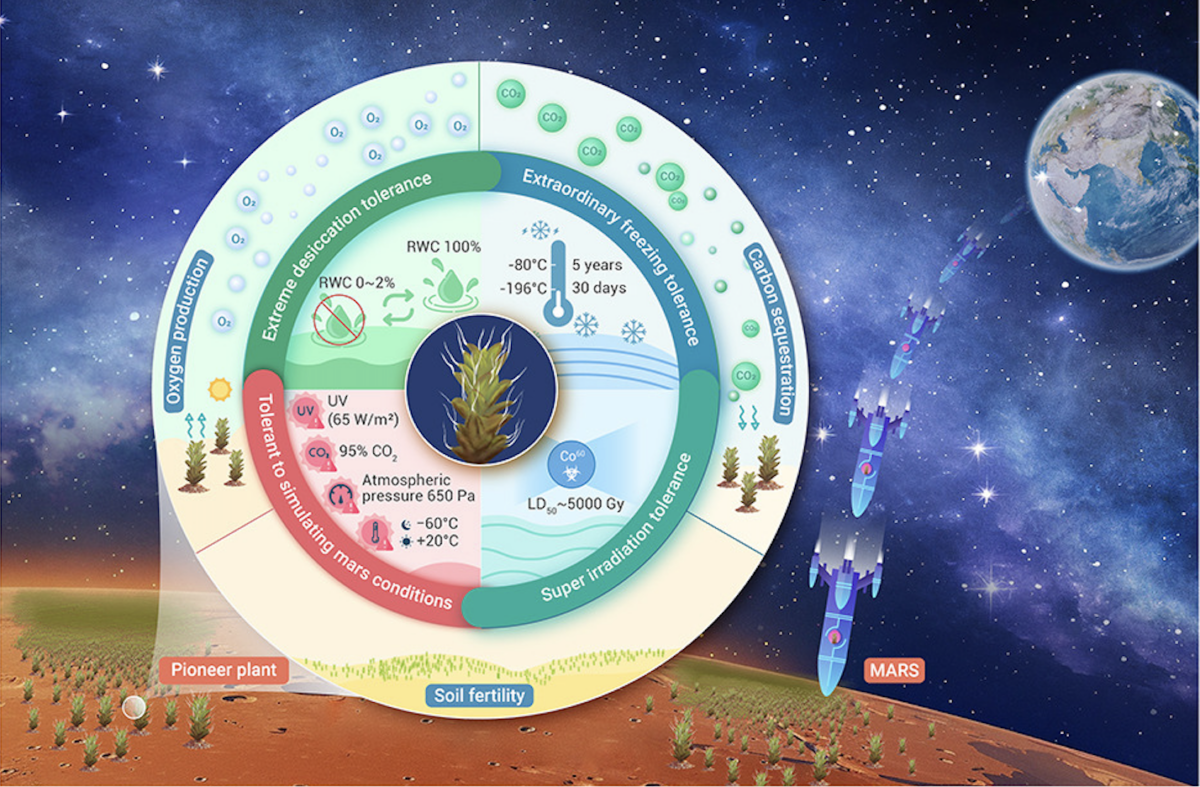This plant could one day pave the way for terraforming the Red Planet with its ability to thrive in drought conditions, withstand frigid temperatures, and even survive high radiation levels.

Syntrichia caninervis moss has shown it is hardy enough to survive the conditions found in space and on Mars. Credit: Sheri Hagwood/USDA-NRCS PLANTS Database
A desert moss with a knack for tolerating harsh conditions on Earth might survive Mars’ desolate landscape, too, according to research published July 1 in The Innovation. The moss, Syntrichia caninervis, can survive drought, frigid temperatures as low as –320.8 degrees Fahrenheit (–196 degrees Celsius), and high radiation levels — as well as all three combined in simulated conditions one might find on Mars.
The researchers wrote that the moss was even more resilient than other nearly indestructible organisms like hardy algae or tardigrades, whose survival ability have also been tested in harsh conditions found in space. It is the first time a whole plant, rather than a microorganism or plant spore, has been tested against such a rubric.
A resilient plant
On Earth, Syntrichia caninervis can be found as ground cover in desert areas in Tibet, the Middle East, the Mojave Desert, and Antarctica. Even under harsh conditions, the moss does much more than just survive. Mosses like this also support the local ecosystem by providing nutrients and aiding decomposition, among serving many other functions. The plant has evolved several advantages that help it survive, including the ability to continue photosynthesis while under snow cover, prevent water loss through the overlapping structure of its leaves, and reflect intense ultraviolet radiation (UV) from the sun via hairlike bristles called awns at the top of its leaves.
Because Syntrichia caninervis grows well in Earth’s most extreme environments, the team decided to test it under even harsher conditions. Researchers subjected the moss to cold by placing it in a freezer at –112 F (–80 C) for up to five years. The team also placed the moss plants in a tank of liquid nitrogen to subject it to even colder temperatures for up to 30 days.
In all cases, the thawed plants still managed to survive and grow, even if it took longer to recuperate than control moss that was dehydrated but not frozen. Additionally, moss that was first dehydrated before being placed in the simulated cold conditions recovered faster than plants not dehydrated.

The moss also survived radiation that would kill most plants. Even more strangely, doses of 500 grays actually helped the plant grow. (A dose of 50 Gy is generally lethal to humans.)
In addition to testing the moss’ hardiness against one factor at a time, the team placed the moss in simulated martian conditions that consisted of air composed of 95 percent carbon dioxide, below-freezing temperatures down to –76 F (–60 C), low atmospheric pressure, and high levels of UV radiation, for up to a week. Plants that had been dehydrated prior to the test regenerated fully within 30 days, while even those that hadn’t been treated beforehand recovered, if more slowly.
Moss on Mars

Overall, the researchers hope that moss could one day contribute to terraforming Mars for future human habitation via its ability to produce oxygen, improve soil quality, and sequester carbon. “Although there is still a long way to go to create self-sufficient habitats on other planets, we demonstrated the great potential of S. caninervis as a pioneer plant for growth on Mars,” the researchers write in their study. “Looking to the future, we expect that this promising moss could be brought to Mars or the Moon to further test the possibility of plant colonization and growth in outer space.”

